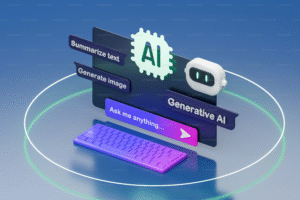Battery-powered trains may soon arrive on UK railways, signaling a shift away from diesel engines. As the nation moves towards more environmentally friendly transportation, companies are developing trains powered by batteries to replace aging diesel fleets. This change aims to make rail travel cleaner, more efficient, and ultimately, safer for passengers and the environment.
Why Battery-Powered Trains?
Currently, UK trains rely on either overhead electrified wires or onboard diesel generators to operate. This dual-power setup is commonly used, with trains switching between electricity and diesel as they travel across different rail lines. However, not all UK tracks have electrified lines, which means some trains must use diesel engines, which emit carbon and contribute to pollution.

Battery-powered trains offer a solution to this issue. Instead of installing costly overhead wires on unelectrified tracks, trains can use batteries as an alternative source of power. Hitachi, a major train manufacturer, recently tested a “tri-mode” train model in its factory in Newton Aycliffe, England. This model can use electric power, diesel, and battery power, reducing fuel use by up to 50% on non-electrified routes.
The Technology Behind Battery-Powered Trains
Diesel-electric trains currently used in the UK draw power from overhead lines where available, and use diesel generators when there are no wires. Hitachi’s new battery-powered model replaces one diesel unit with 16 batteries similar to those in electric vehicles (EVs). These batteries charge while the train is on electrified tracks or within 10-15 minutes when the train is stationary. This flexibility lets trains switch automatically between power sources, allowing them to operate smoothly and efficiently, especially in urban areas where emissions are a concern.
The new tri-mode trains aim to use their batteries in places like stations, where diesel emissions can affect passengers directly. Additionally, the batteries can be retrofitted into existing diesel-electric trains, which could reduce costs by modifying rather than replacing older train models.
Current Trials and Future Goals
Although battery-powered trains are already running in countries like Japan and Germany, they are just beginning to gain traction in the UK. Hitachi hopes its testing will lead to fully battery-powered models capable of traveling 90 kilometers (56 miles) on non-electrified tracks. Siemens, another major company, is also developing battery-only trains in its factory in Goole, Yorkshire. Orders are expected from companies like ScotRail, Great Western Railway (GWR), and Transport for Wales.
These advancements come as battery technology improves, making cells smaller, lighter, and more powerful. The UK government is also pushing for cleaner and more reliable transportation options, and battery-powered trains align well with these goals. Hitachi has shown that, with continued development, it’s possible to improve battery power and range, eventually allowing trains to operate across the UK’s entire rail network without diesel.
However, for battery trains to work effectively across the entire network, more electrified sections of track and charging stations may be needed. Network Rail, which oversees railway infrastructure, has estimated that adding electrification could cost £1 million to £2.5 million per kilometer.
Safety Concerns and Testing
Safety is a key consideration for battery-powered trains. Batteries, especially lithium batteries like those used in EVs, have raised some concerns about the risk of fire. Hitachi’s trains use batteries from Nissan Leaf, which have only had 16 fire incidents in over 500,000 units sold worldwide. Managed properly, lithium batteries are generally safe, but when damaged, they can undergo “thermal runaway,” where heat builds uncontrollably, making fires difficult to extinguish.
Hitachi has conducted rigorous testing to address this issue. Engineers deliberately tried to destabilize the batteries by overheating them or piercing their outer layers to see how they would react. To minimize risk, each battery cell has a heat shield around it to contain any possible fire. Additionally, a cooling unit on the roof of each train car helps regulate battery temperature, and specialized software monitors battery conditions.
If a fire were to occur, industry experts agree that the best course of action is to flood the battery with water to cool it down. However, this may not be possible in certain situations, such as in tunnels, where smoke and toxic gases could present additional risks to passengers and firefighters. Some fire safety consultants suggest that, in severe cases, allowing a battery to burn out on its own might be safer. In this situation, Hitachi’s design allows for the affected carriage to be moved out of the way to reduce disruptions on the railway.

Preparing for a Diesel-Free Future
Jim Brewin, head of Hitachi Rail UK and Ireland, emphasizes that the goal is to make UK railways diesel-free by 2050. Hybrid trains, like the tri-mode model, are an essential step toward achieving this goal. Hitachi plans to gradually replace diesel with lighter and more efficient battery cells, improving train performance and reliability. Recent tests have shown that existing trains could be modified to use either full or partial battery power, extending their lifespans and cutting emissions.
The Future of Battery-Powered Rail Travel
Although challenges remain, battery-powered trains represent a promising future for UK rail travel. They could reduce pollution, save costs, and provide a more sustainable option for future generations. As technology advances, trains will become lighter, safer, and more efficient, ultimately helping the UK achieve its climate goals.











